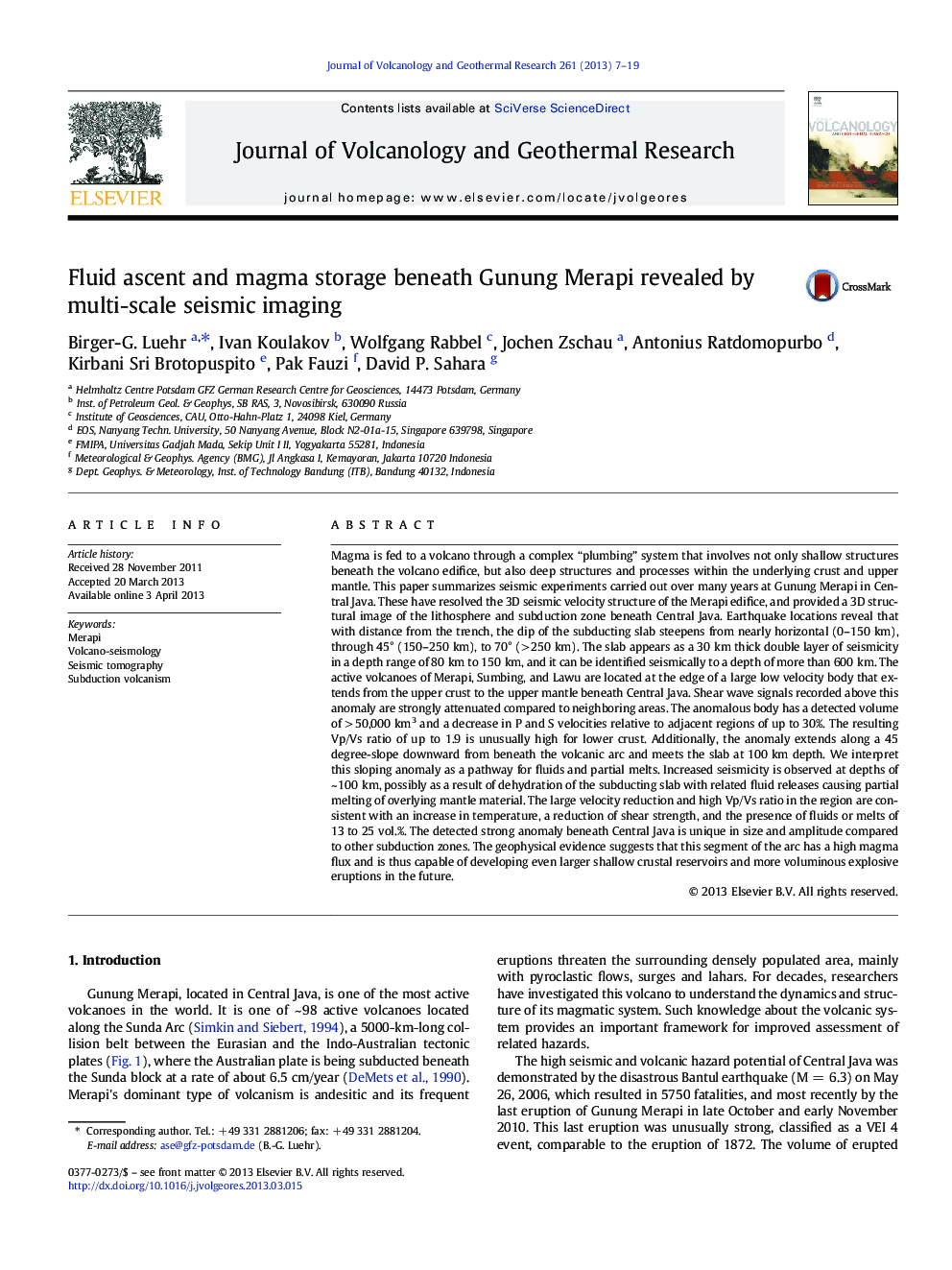| کد مقاله | کد نشریه | سال انتشار | مقاله انگلیسی | نسخه تمام متن |
|---|---|---|---|---|
| 4714682 | 1638360 | 2013 | 13 صفحه PDF | دانلود رایگان |
• An amphibious seismic experiment was carried out at the Sunda Arc subduction.
• The seismic tomography combines data collected with active and passive methods.
• The area with sufficient seismic ray density covers more than 30,000 km2.
• The range usable for interpretation reaches down to 150 km depth.
• An unusual strong negative velocity anomaly was found beneath Central Java.
Magma is fed to a volcano through a complex “plumbing” system that involves not only shallow structures beneath the volcano edifice, but also deep structures and processes within the underlying crust and upper mantle. This paper summarizes seismic experiments carried out over many years at Gunung Merapi in Central Java. These have resolved the 3D seismic velocity structure of the Merapi edifice, and provided a 3D structural image of the lithosphere and subduction zone beneath Central Java. Earthquake locations reveal that with distance from the trench, the dip of the subducting slab steepens from nearly horizontal (0–150 km), through 45° (150–250 km), to 70° (> 250 km). The slab appears as a 30 km thick double layer of seismicity in a depth range of 80 km to 150 km, and it can be identified seismically to a depth of more than 600 km. The active volcanoes of Merapi, Sumbing, and Lawu are located at the edge of a large low velocity body that extends from the upper crust to the upper mantle beneath Central Java. Shear wave signals recorded above this anomaly are strongly attenuated compared to neighboring areas. The anomalous body has a detected volume of > 50,000 km3 and a decrease in P and S velocities relative to adjacent regions of up to 30%. The resulting Vp/Vs ratio of up to 1.9 is unusually high for lower crust. Additionally, the anomaly extends along a 45 degree-slope downward from beneath the volcanic arc and meets the slab at 100 km depth. We interpret this sloping anomaly as a pathway for fluids and partial melts. Increased seismicity is observed at depths of ~ 100 km, possibly as a result of dehydration of the subducting slab with related fluid releases causing partial melting of overlying mantle material. The large velocity reduction and high Vp/Vs ratio in the region are consistent with an increase in temperature, a reduction of shear strength, and the presence of fluids or melts of 13 to 25 vol.%. The detected strong anomaly beneath Central Java is unique in size and amplitude compared to other subduction zones. The geophysical evidence suggests that this segment of the arc has a high magma flux and is thus capable of developing even larger shallow crustal reservoirs and more voluminous explosive eruptions in the future.
Journal: Journal of Volcanology and Geothermal Research - Volume 261, 1 July 2013, Pages 7–19
